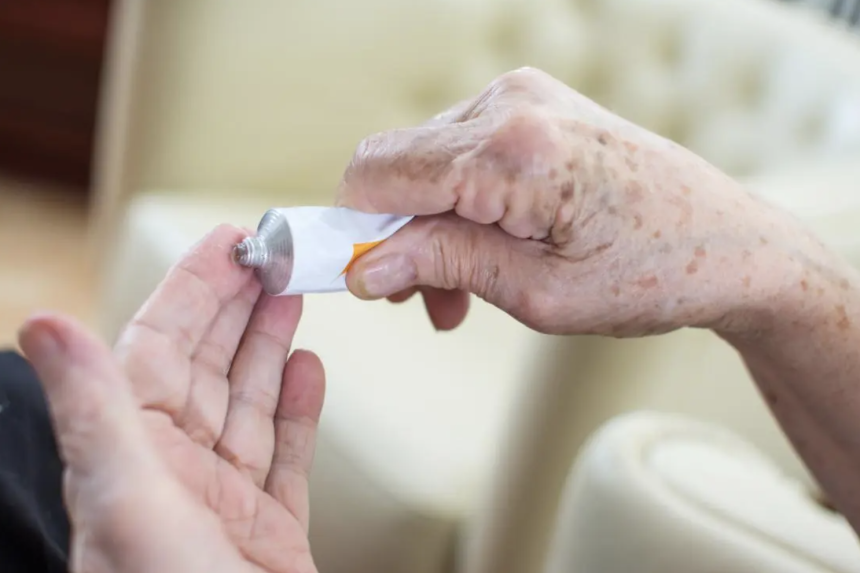When it comes to using topical pain relief gels, seniors must prioritize safety above all else. In this section, we’ll uncover the key steps to ensure the safe usage of these gels to alleviate pain. From taking necessary precautions to identifying the recommended dosage and frequency, we’ve got everything covered to help seniors effectively manage their discomfort. So, let’s dive in and explore the important guidelines for the safe use of a topical pain relief gel.
Precautions to Take
When using topical pain relief gels, it is important to take precautions to ensure safe and effective use. Consulting a healthcare professional is crucial, especially if you have existing medical conditions or are taking other medications, as they can provide specific guidance. It is essential to carefully read and follow the instructions provided with the cream, including dosage, frequency of application, and any precautions or warnings.
Before applying the cream to a larger area, it is recommended to perform a patch test on a small area of skin and wait 24 hours to check for any redness, irritation, or discomfort. It is important to avoid applying the cream to open wounds or broken skin, as this may cause further irritation or infection. It is best to wait until the skin has fully healed before using the cream.
It is advised to avoid contact with eyes, mouth, and other sensitive areas. In case of accidental contact, thoroughly rinse with water. To maintain effectiveness and ensure the cream’s safety, store it in a cool, dry place as stated on the packaging and keep it out of reach of children and pets.
If you experience adverse reactions such as excessive redness, swelling, or a burning sensation, it is important to discontinue use and seek medical attention. By following these precautions, you can ensure a safe and beneficial experience when using topical pain relief gels.
Recommended Dosage and Frequency
The recommended dosage and frequency for topical pain relief gels for seniors can vary depending on the product and individual needs. It is important to follow the manufacturer’s instructions and consult with a healthcare professional if needed.
Here is a table providing the recommended dosage and frequency for three types of topical pain relief gels:
| Cream Type | Dosage | Frequency |
| Menthol-based | Apply a thin layer to the affected area | Up to 4 times daily |
| Capsaicin | Apply a thin layer to the affected area | Up to 3 times daily |
| Lidocaine | Apply a thin layer to the affected area | Up to 3 times daily |
Please note that the recommendations may vary depending on the concentration of ingredients and the severity of pain. It is recommended to start with a lower dosage and increase as necessary, while carefully monitoring for any adverse reactions.
To avoid side effects, it is important not to exceed the recommended dosage or frequency. If the pain persists or worsens, it is advisable to consult a healthcare professional.
It is crucial to remember that the dosage and frequency may vary for each individual. To receive personalized advice, it is best to follow specific instructions and consult with a healthcare professional.
Alternative Pain Management Options for Seniors
Alternative Pain Management Options for Seniors
Exercise: Regular physical activity can help manage pain by strengthening muscles and joints. Activities like walking, swimming, and yoga are gentle on the body and can improve flexibility and reduce pain.
Acupuncture: Inserting thin needles into specific points on the body can promote pain relief. Many seniors find acupuncture helpful in managing chronic pain conditions, such as arthritis.
Physical therapy: A trained physical therapist can provide specialized exercises and techniques to relieve pain and improve mobility. They may use heat or cold therapy, manual therapy, or teach seniors how to safely perform stretches and exercises.
Massage therapy: Massage can relax muscles, improve circulation, and reduce tension and pain. It can be particularly beneficial for seniors with conditions like fibromyalgia or chronic back pain.
Mind-body techniques: Practices like meditation, deep breathing exercises, and guided imagery can help seniors manage pain by reducing stress, enhancing relaxation, and promoting a positive mindset.
Herbal remedies: Some herbs, such as turmeric, ginger, and devil’s claw, have anti-inflammatory properties and may provide pain relief. It’s essential to consult with a healthcare professional before incorporating herbal remedies into a pain management plan.
TENS therapy: Using a small device that emits low-voltage electrical currents can relieve pain. TENS therapy is commonly used for conditions like arthritis, neuropathy, and chronic back pain.
Lynn Martelli is an editor at Readability. She received her MFA in Creative Writing from Antioch University and has worked as an editor for over 10 years. Lynn has edited a wide variety of books, including fiction, non-fiction, memoirs, and more. In her free time, Lynn enjoys reading, writing, and spending time with her family and friends.















